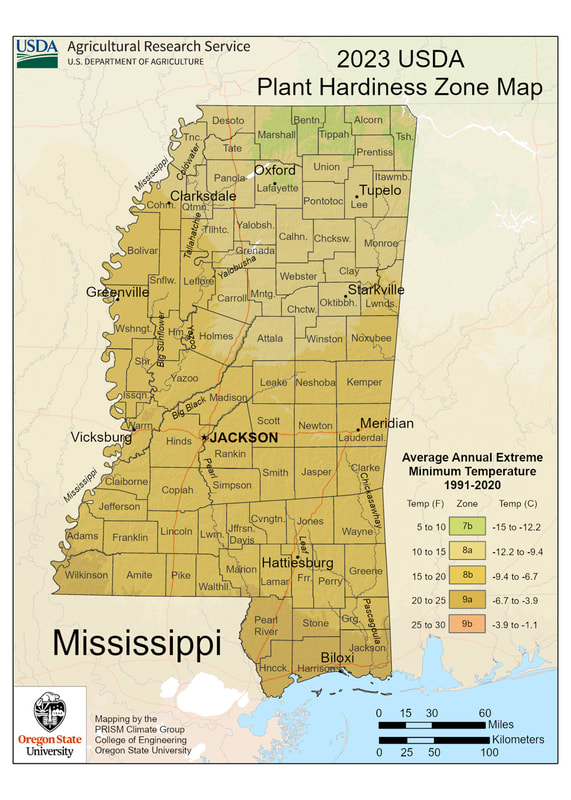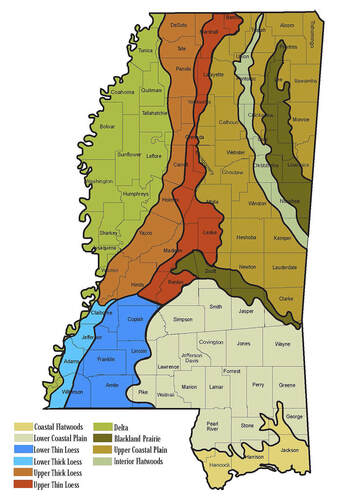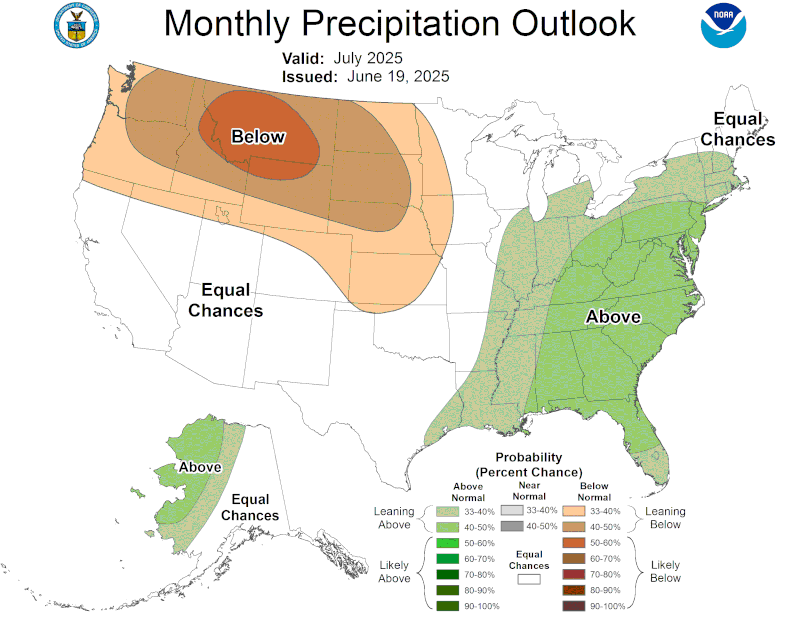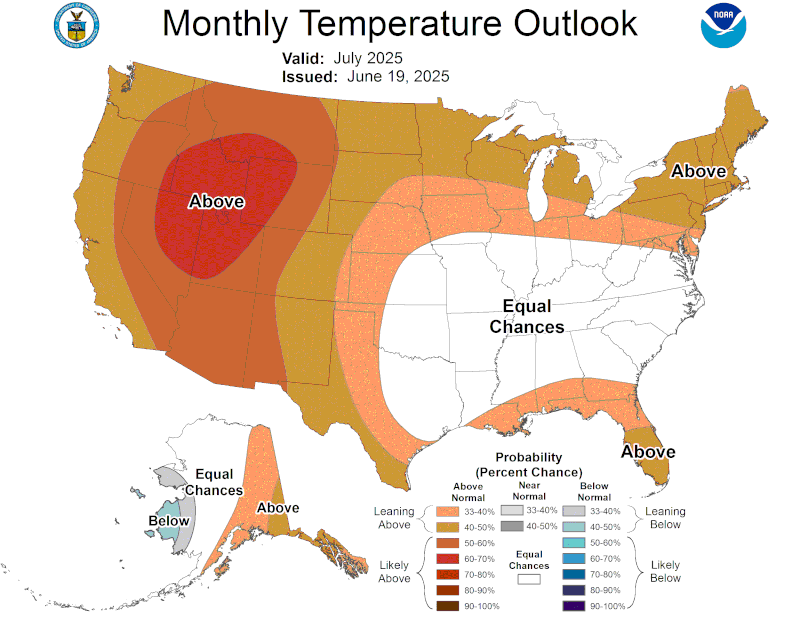Gardening Information and
Weather Outlook
|
Mississippi Soil TypesIn Mississippi, there are several major soil resource areas. These predominant soils and composite vegetation define major ecoregions across the state. These are the Delta, Loess Hills, Upper Coastal Plain, Blackland Prairie, Lower Coastal Plain, and Flatwoods.
Delta The Delta region of western Mississippi is part of the Mississippi River floodplain. Soils here are moist to wet, with medium to heavy texture. Loess Hills Adjacent to the Delta to the east are the Loess Hills, formed from wind-blown glacial outwash some 10,000 to 12,000 years ago. These silty upland soils are deep, well drained, and fertile. Upper Coastal Plain and Interior Flatwoods The Upper Coastal Plain and Interior Flatwoods major soil regions are in the northeastern section of the state. The soils in these regions are older and more highly weathered, so they are less fertile than those to the west. These soils display advanced soil development, with well-defined topsoil and subsoil horizons. Blackland Prairie Interspersed within the Coastal Plains is the Blackland Prairie ecoregion. The Prairie soils bisect the northern and central portions of the state. Having developed from more chalky sediments, soils in this region are fine-textured with shrink-swell clays. Soil pH tends toward alkalinity. Lower Coastal Plain and Coastal Flatwoods In the southeastern corner of the state are the Lower Coastal Plain and the Coastal Flatwoods along the Gulf of Mexico. Predominant soils are sandy and wet with low native fertility. |




